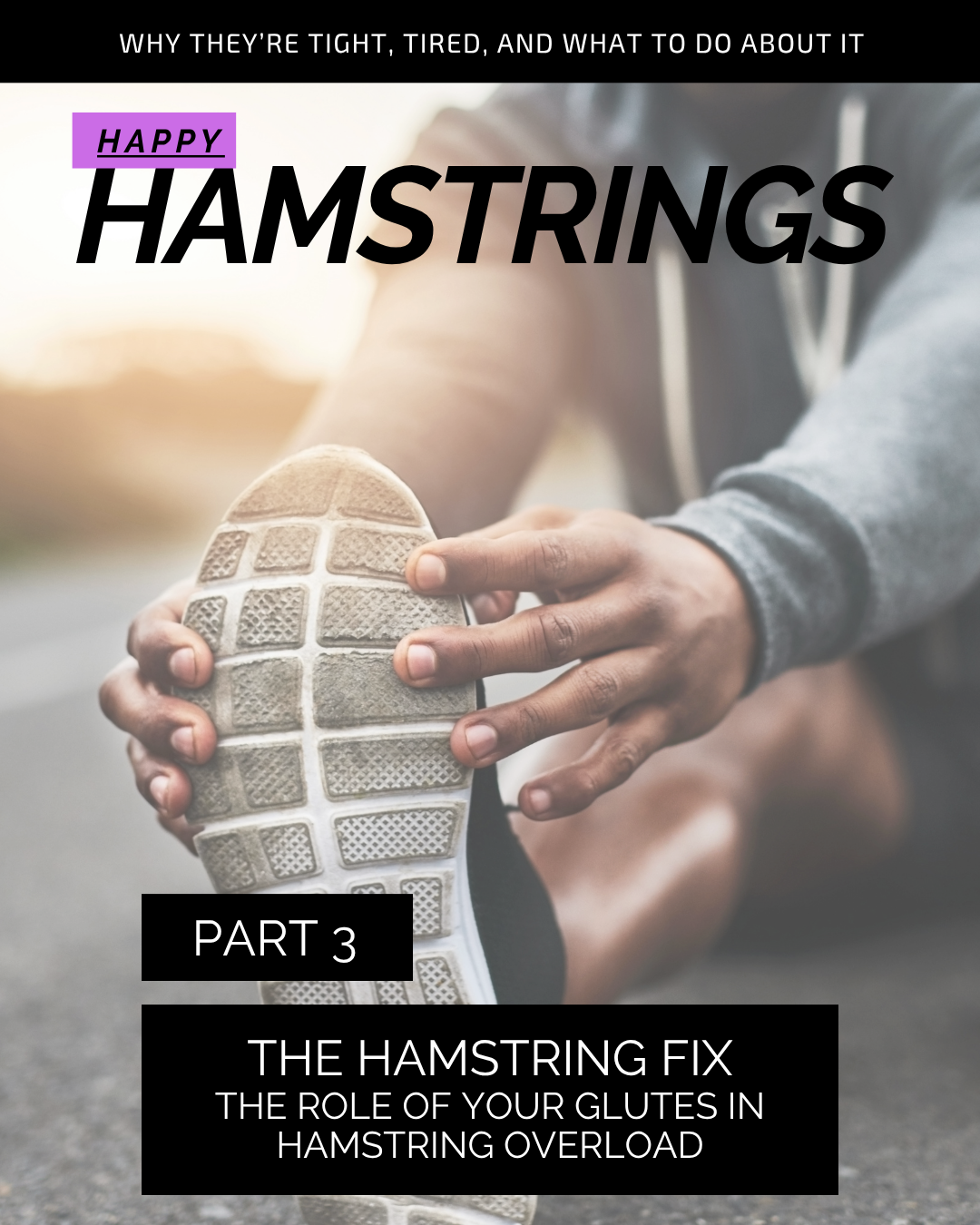Blog 3: Happy Hamstrings
Part 3 — The Hamstring Fix: The Role of Your Glutes in Hamstring Overload
In Part 2 of the Happy Hamstrings blog series, we talked about how your hamstrings need the right balance of mobility and stability, not just endless stretching. But what if you’re doing all the right mobility work and your hamstrings still feel tight, sore, or overworked?
The missing link... YOUR GLUTES!
Your Glutes Are the Powerhouse
Your glutes — the big muscles in your butt — are meant to be the engine behind most of your movement.
They drive your stride when you run, help you climb hills, and stabilize your hips every time your foot hits the ground.
But when your glutes aren’t firing properly, guess who steps in to do their job?
Your hamstrings.
They’re strong, but they’re not built to carry that load alone.
Over time, they tighten up, fatigue faster, and become more prone to strains, tendinopathy and pushed enough sometimes tears.
Why Glutes “Turn Off”
It’s not that your glutes are lazy, they’ve just learned to stay quiet because of how we move (or the lack there of with sitting all day long).
Here’s what often happens:
Too much sitting: Your glutes are literally “switched off” for hours.
Weak core or poor posture: Your pelvis tips forward, making it hard for the glutes to activate.
Overdominant hamstrings: They start doing the glutes’ job during runs, lifts, or even daily movements.
It’s a pattern that builds slowly, but once it’s there, your hamstrings are always the ones picking up the slack.
How to Tell if This Is You
Try this quick check:
Stand tall and squeeze your glutes. Do you actually feel them contract?
Now try a bridge exercise — are your hamstrings working harder than your glutes?
If yes, it’s a sign your glutes are taking a back seat.
Simple Glute Activation Exercises:
1. Glute Bridge (Done Right!!!)
Lie on your back with your knees bent and feet flat.
Drive through your heels to lift your hips.
Focus on squeezing your glutes, not arching your back.
👉 Tip: Keep your core tight — it helps your glutes fire, not your hamstrings.
2. Fire Hydrants
On all fours (or standing) bring one leg out to the side at 90degs (like a dog peeing on a fire hydrant)
Keep your hips stacked and squeeze through your glutes
👉 Small movement, big activation. Perfect for pre-run warm-ups.
3. Monster Walks
Loop a band around your knees or ankles.
Slight squat position, then step side-to-side slowly.
👉 Lights up your glutes and hips while building stability.
Why This Matters for Your Hamstrings:
When your glutes start doing their job again, your hamstrings don’t have to hold everything together. They can finally relax, recover, and go back to assisting — not overworking. It’s not about isolating muscles — it’s about getting your body to work as a team.
Glutes drive. Core stabilizes. Hamstrings assist.
That’s the recipe for strength, speed, and longevity in the world of endurance sports.
Ready to Get Those Glutes Firing?
At Endurance Therapeutics, we help athletes find and fix the root cause of muscle overload — so you can move better, feel stronger, and perform your best.
👉 Book a movement assessment at Endurance with Dr. Keirstyn and get your glutes (and hamstrings!) working in perfect sync!
Coming Up Next: Rebuilding Strength — Key Exercises to Prevent Re-injury
Now that your glutes are waking up, it’s time to get stronger.
In the next blog, we’ll dive into the best strength exercises for hamstring resilience — including how to use eccentric and isometric training to bulletproof your legs against future injuries. Get ready to level up your power and performance.


